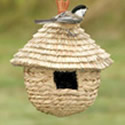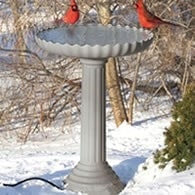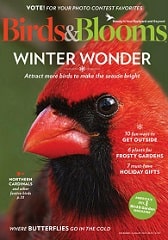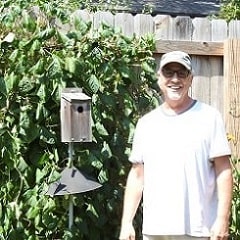Complete Guide to the Black-Capped Chickadee
Their unique nesting practices and social hierarchy shape their behaviors, making them far from ordinary. Let's explore!
Description: Size, Field Marks
Black-capped Chickadees belong to the Titmouse family and measure about five inches in length. They have a plump, round body and a relatively short tail.
Their most noticeable feature is a black cap that stretches from the eyes to the back of the head.
White cheeks frame this cap, creating a striking black-and-white head pattern. They also have a short, dark bill and a small black bib on their throat.
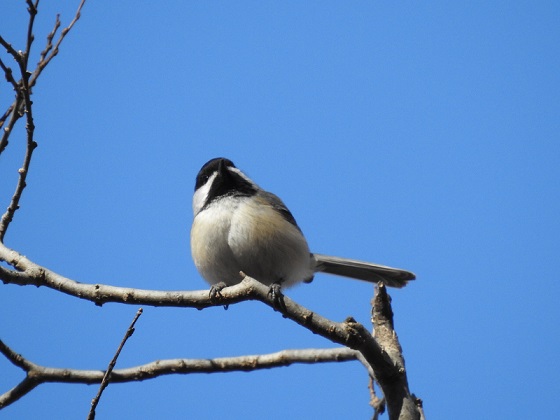
Black-capped Chickadee
Their upper parts are generally grayish, sometimes showing a slight olive tint on the wings and back.
Their underparts are mostly white, while the sides may show a pale buff tint.
Do Females Differ from Males?
Visually, male and female Black-capped Chickadees look almost identical. However, you can tell them apart by paying attention to their behaviors and calls.
For instance, at a feeder, the female often lets the male eat first. Once he flies away with his seed, she takes her turn.
Additionally, only the male makes the "fee-bee" call, so hearing this sound is a reliable way to identify him.
Pairing and Breeding Habits
Before nesting season begins, pairs separate from their small winter flocks that have been feeding together through the colder months, and start choosing mates.
The mating - breeding season of the Black-capped Chickadee typically occurs in late winter, around February or early March.
During courtship, unmated males sing to attract females. Scientists believe these songs convey information about a male's fitness and genetic health.
Males also use visual displays, such as puffing out feathers and hopping around, to demonstrate their physical attributes and impress potential mates.
Males may also offer food to females, a mating behavior known as "courtship feeding." It demonstrates the male's ability to provide for future offspring.
Do They Mate for Life?
Most Black-capped Chickadee pairs do mate for life. However, extra-pair copulations do occur. Sometimes, a female will breed with a male of higher social rank, even if she already has a mate.
Nesting Habits
Black-capped Chickadees typically begin nesting between mid-April and May in most regions. Once they establish a territory, the female selects a nest site.
Nest building can take anywhere from 1 to 2 weeks to complete.
Preferred Nesting Locations
They may use an old woodpecker hole or excavate a cavity in a tree with soft, decaying wood.
When excavating the tree hole themselves, trees like Aspen, Birch, and Surgar Maple are preferred. In other species of trees, they'll choose previously excavated nest of other species. (Mennill and Ratcliffe 2004b)
I've found bird houses placed at least five feet off the ground and spaced about 100 feet apart often succeed in attracting chickadees.
Nest Construction and Materials Used
While both male and female will participate in excavating a nest site, the female gathers the material and constructs the actual nest.
She builds a cup-shaped nest, using coarse materials such as moss for the base. She then lines the nest with softer materials, like animal fur, to protect the eggs and chicks.
What Does the Nest Looks Like
The image below shows how adaptable these birds are when building nests. They adjust the amount of material to fit the size of the cavity they choose.
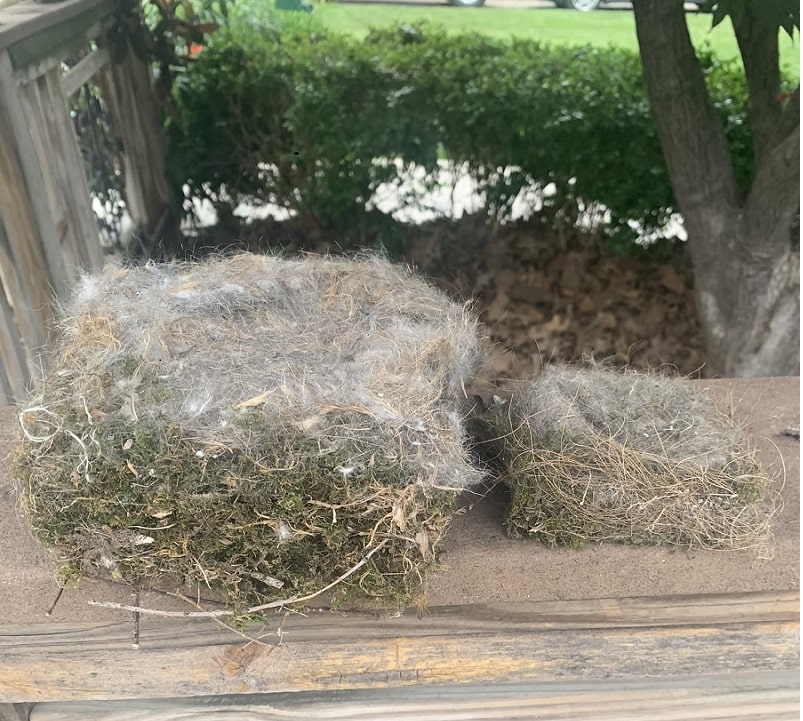
Two Different-Sized Chickadee Nests
One birdhouse was larger than the other, requiring more nesting material. Interestingly, both nests raised six chicks each.
Egg Laying and Incubation Season
Chickadees may begin laying eggs as early as late April and continue into July. Weather conditions, as well as the female's health and age, influence the exact timing.
Older, healthier females typically lay eggs earlier than younger, less experienced birds.
Later clutches sometimes occur due to nest failure earlier in the breeding season.
The female lays up to six white, speckled eggs and is the only one to incubate them. The eggs hatch after about 12 to 13 days of incubation.
While she is incubating, the male brings her food and chases away other males that enter the territory.
Sometimes, the male calls the female off the nest to feed her. Other times, she leaves on her own and calls for him to bring food.
Occasionally, the female feeds herself. Once the eggs hatch, she broods the young for the first few days while the male keeps bringing her food.
Nesting timeline and egg-laying habits of Black-capped Chickadees.
| Nesting Timeline Behaviors | |
|---|---|
| Egg Laying | May - 3 - 7 laid |
| Incubation | 12 - 13 days |
| Nestling Phase | 16 days |
| Broods | 1 |
Nest Defense
Both male and female fiercely defend their eggs and young against intruders such as House Wrens and House Sparrows.
When Do Young Leave Nest?
After the brooding period, both parents feed the young, which remain in the nest for about 16 days.
About 10 days after fledging, the chicks can feed themselves, although the adults will continue to care for them for about three to four weeks.
Chickadees usually raise only one brood per season. A second nesting is rare and generally happens only if the first nesting attempt fails.
Bird House Placement - How Close Do They Nest to Each Other?
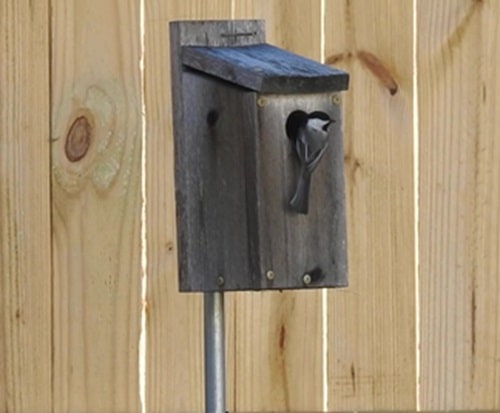
Black-capped Chickadee at Birdhouse Entrance
When setting up multiple birdhouses for Black-capped Chickadees, keep them at least 80 feet apart.
In my experience, two pairs nested successfully about 100 feet apart, although some experts recommend distances of over 300 feet.
Several factors influence how closely they will nest near one another, including the availability of food. The less food is available, the more space they need.
While bird feeders can help them find food, do not place feeders too close to nest sites. Feeders can attract predators that might threaten eggs or chicks.
What do Chickadees Eat: Summer-Winter Diet
Black-capped Chickadees eat insects, seeds, and berries. During the nesting season, they consume large amounts of insect eggs and larvae.

Chickadee at Bird Feeder with Sunflower Seeds
You may see them hanging upside down on branches in search of insects. During winter, about half of their diet is animal-based, including insects, larvae, and egg cases.
In summer, this rises to as much as 80%.
Chickadees act like tiny exterminators, feasting on caterpillars such as spruce budworms and cankerworms.
They also hide seeds and insects in secret locations, remembering where they stored them, even months later.
When multiple caches are available, they spend more time feeding from the ones that have foods that contain the highest energy value.
To attract them, try offering high-fat suet and black-oil sunflower seeds, two of their favorite foods.
Feeding Behavior
At a feeder, you may notice that chickadees wait patiently before snatching a seed and flying off to eat it.
Their small bills require precise pecking to reach the seed's inner parts.
Dominant birds tend to feed first, offering insight into their social hierarchy.
If you're serving their preferred seeds, you might also want a squirrel-proof feeder to reduce wasted seed.
Dimensions For Building a Chickadee Birdhouse
Chickadees are cavity nesters, often using soft or partially rotted wood in trees for their nests. They also adapt well to man-made nest boxes.
For Black-capped Chickadees, the ideal entrance hole is 1 1/8 inches in diameter. The box should be about 8 inches tall with a 4-inch-square floor.
Position the bottom of the entrance hole 4 to 6 inches above the floor.
To protect from wind and rain, face the birdhouse toward the northeast if possible.
Chickadees Choose Birdhouse for Nesting
Late Summer And Winter Behavior Habits
Once nesting season ends, keep an eye out for small flocks of Chickadees, usually around a dozen birds or fewer.
These groups include juveniles, adult pairs, and solitary adults. They remain close to their breeding territories in winter.
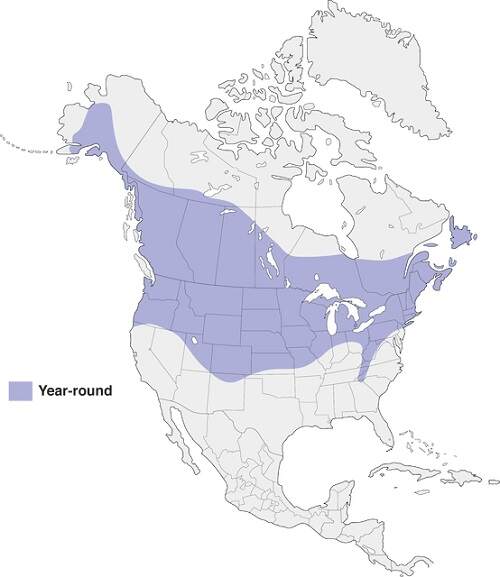
Black-capped Chickadee Range Map
Each chickadee flock usually centers around a leading pair that defends feeding grounds from other birds.
In cold northern climates, chickadees puff up their feathers to trap warm air and conserve body heat. They also constrict blood vessels near the skin to reduce heat loss.
If their body temperature drops below about 110°F, they start shivering to generate heat, although this rapidly uses up their energy stores.
On extremely cold nights, chickadees use their most powerful survival tactic: entering a state of torpor.
This condition lowers their breathing rate and metabolic needs, dropping their body temperature by about 10°F. As a result, they require fewer food reserves to survive.
These small flocks often travel with other species, such as Downy Woodpeckers, Tufted Titmice, and White-breasted Nuthatches.
Between August and February, they move together as a community, until Black-capped Chickadees begin their next breeding season.
What is Their Lifespan
Black-capped Chickadees typically live only two to three years, and only about 20% of hatchlings survive past their first year. However, nature can produce some surprises.
In Minnesota's winter of 2011, ornithologist Michael North recaptured a banded chickadee that was 11 years and 6 months old, surpassing the previous record by four months.
While this may seem minor, it highlights the remarkable endurance these birds can display.
Black-capped Chickadee Call - Song Meaning
Black-capped Chickadees live mostly in forested areas and derive their name from their signature "chick-a-dee" calls.
This versatile call can serve as both a friendly greeting and a sharp alarm, changing in intensity as needed.
Males produce the "fee-bee-ee" song, especially during courtship or when defending territory, often extending the third note.
The number of "dee" notes can vary from two to four, giving each call a unique quality.
Conclusion
Black-capped Chickadees are fascinating birds with unique nesting and feeding behaviors. By understanding their habits and providing proper nesting boxes and food, you can enjoy their lively presence in your backyard.
Foote, J. R., D. J. Mennill, L. M. Ratcliffe, and S. M. Smith (2020). Black-capped Chickadee (Poecile atricapillus), version 1.0. In Birds of the World (A. F. Poole, Editor). Cornell Lab of Ornithology, Ithaca, NY, USA.


